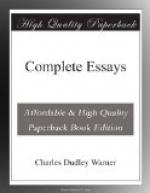“A gentleman entered the room bearing a rod, and along with him another who had a table-cloth, which, after they had both kneeled three times, he spread upon the table; and after kneeling again they both retired. Then came two others, one with the rod again, the other with a salt-cellar, a plate, and bread; and when they had kneeled as the others had done, and placed what was brought upon the table, they two retired with the same ceremonies performed by the first. At last came an unmarried lady (we were told she was a countess) and along with her a married one, bearing a tasting-knife; the former was dressed in white silk, who, when she had prostrated herself three times, in the most graceful manner approached the table, and rubbed the plates with bread and salt, with as much awe as if the Queen had been present. When they had waited there a little while the Yeomen of the Guard entered, bare-headed, clothed in scarlet, with a golden rose upon their backs, bringing in at each turn a course of twenty-four dishes, served in plate, most of it gilt; these dishes were received by a gentleman in the same order they were brought, and placed upon the table, while the Lady Taster gave to each of the guard a mouthful to eat, of the particular dish he had brought, for fear of, any poison. During the time that this guard, which consists of the tallest and stoutest men that can be found in all England, being carefully selected for this service, were bringing dinner, twelve trumpets and two kettle-drums made the hall ring for half an hour together. At the end of all this ceremonial, a number of unmarried ladies appeared, who with particular solemnity lifted the meat off the table and conveyed it into the Queen’s inner and more private chamber, where, after she had chosen for herself, the rest goes to the Ladies of the court.”
The queen dined and supped alone, with very few attendants. II
We now approach perhaps the most important matter in this world, namely, dress. In nothing were the increasing wealth and extravagance of the period more shown than in apparel. And in it we are able to study the origin of the present English taste for the juxtaposition of striking and uncomplementary colors. In Coryat’s “Crudities,” 1611, we have an Englishman’s contrast of the dress of the Venetians and the English. The Venetians adhered, without change, to their decent fashion, a thousand years old, wearing usually black: the slender doublet made close to the body, without much quilting; the long hose plain, the jerkin also black—but




